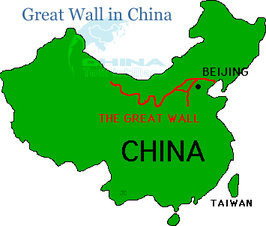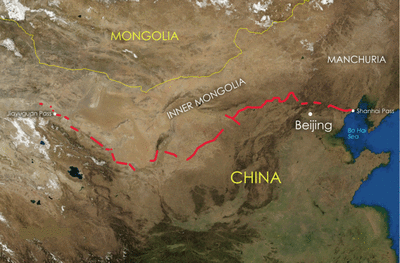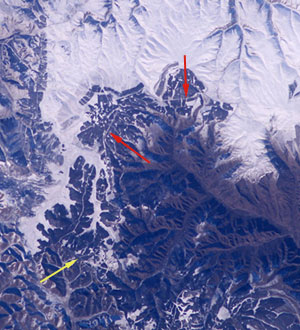
When one hears China, there is just one thing in particular that comes into his mind and that is the Great Wall of China. Apart from being well known for its ever-growing population and various electronic devices and articles, China is blessed with important and significant tourist destinations and attractions. The Great Wall of China was regarded as one of the Medieval Wonders of the World by UNESCO and was built by various dynasties since times. Constructed by multiple Chinese emperors, the unique structure of the Great Wall snakes through the mountains of China for about 4500 miles.
Located in the capital of the country, Beijing, The Great Wall of China stretches from the Shanhaiguan Pass to the Jiayuguan Pass. It extends to the yellow ridges at the Huangya Pass, the Ordos desert, across the Ju river, through the cities and towns, covering the mountain ranges in the Simatai and forests in Mutiany.

The Wall, originally built around 5th Century B.C., has undergone various re-constructions. Previously its length was 5500 miles and now it measures about 21,196 kilometres in length. Built with an intention to stop even the most determined invaders, the Great Wall of China is about 20 feet tall. Its width varies from 4.6 metres to 9.1 meters from the base and about 2.7 metres to 3.7 metres at the top.
Qin Shi Huang, the first Emperor of China, built the Great Wall. Although the Wall has been rebuilt, maintained and enhanced, during the Ming Dynasty, little of the original wall still remains. It was during the times of war that the Chinese states of Qin, Wei, Zhao, Qi, Yan and Zhongshan constructed these fortifications for their defence at their respective borders. It was in 221 B.C. during the Qin Dynasty that the Emperor conquered the opposing states. However, he wanted his empire to be one and so summoned to break the walls and rebuild a new wall that would border the northern frontier to protect against the intrusions of the Xiongnu people. Thousands of workers started the work to construct the Wall. The defeat of the Ming’s Army by the Oirats in the Battle of Tumu during the 14th century in the Ming Dynasty revived the concept of Great Wall. In order to keep the nomadic tribes away, the Ming adopted a new strategy by constructing walls along the northern border. The construction of the Wall was comparatively stronger and elaborated. The walls were built of bricks and stones instead of rammed earth. About 25,000 watchtowers were a part of the construction of the Wall. Also later, between 1567 and 1570, about 1200 watchtowers had been constructed from the Shanhaiguan Pass to Changping.

The unique features of the Great Wall of China are as follows:
-
The Great Wall of China was mainly built of rammed earth, stones and wood.
-
With the help of the materials like tiles, lime and stone, the construction of the wall quickened.
-
For the foundation, inner and outer brims and gateways of the wall, rectangular shaped cut stones were used.
-
It was convenient for the guards to survey the surrounding land from the parapets.
-
A matter of high importance was communication between the army units and the ability to call reinforcements and warn the garrisons of the enemy movements.
-
It was so strategically built that it had the signal towers at high points for their visibility. For those going through, wooden gates were used as a trap.
The myth that the Great Wall of China is visible from the space is in controversy. One cannot see the entire monument but small sections were captured from space. These sections include the parts from Inner Mongolia, which is the southern part of China. Also according to the optics of resolving power, that is, distance versus width of the iris, an unaided eye could view only that object that has a reasonable contrast to its surrounding of about 70 mi or more in diameter. However, apparently the width of the Great Wall of China appears similar to human hair from about just 2 miles away.



